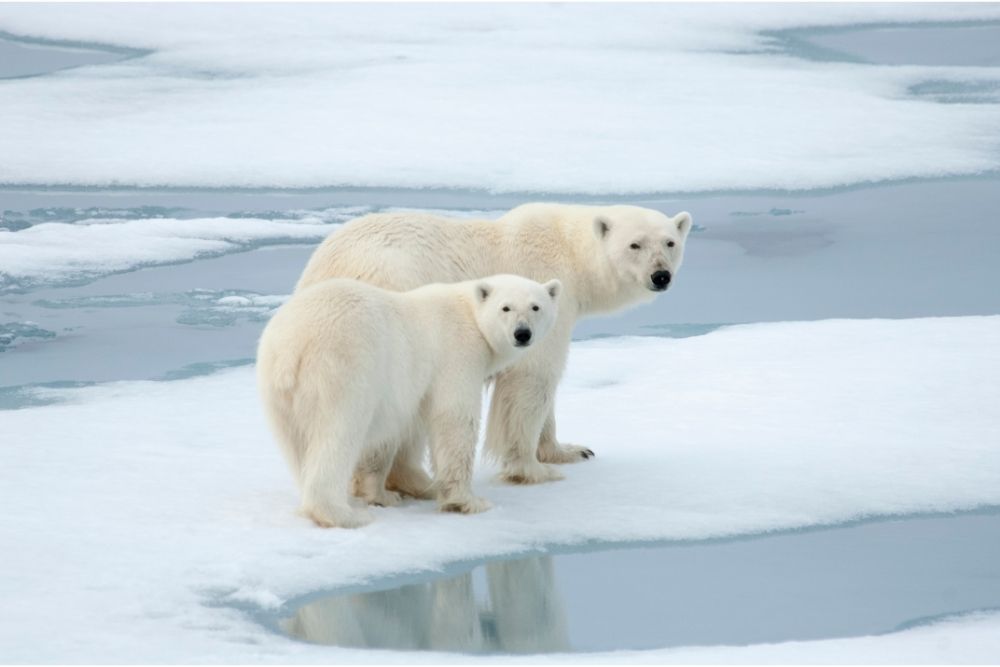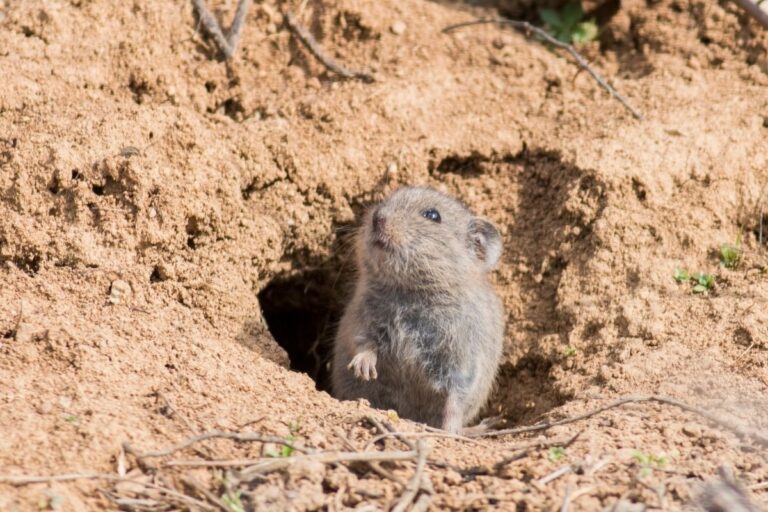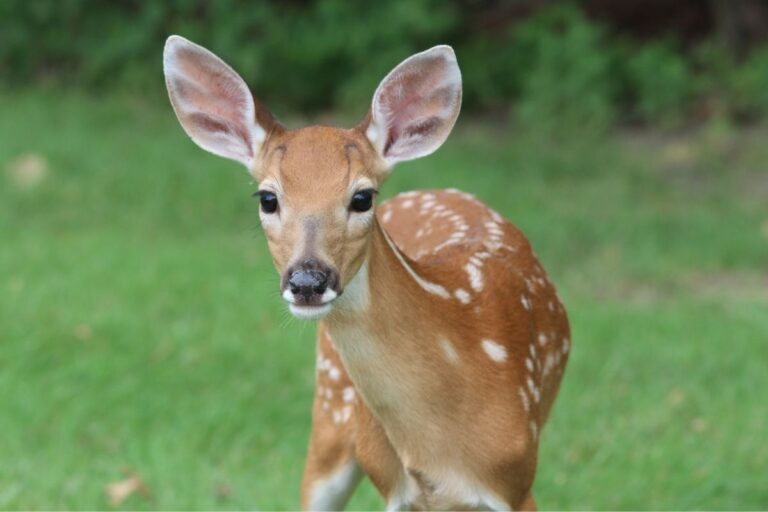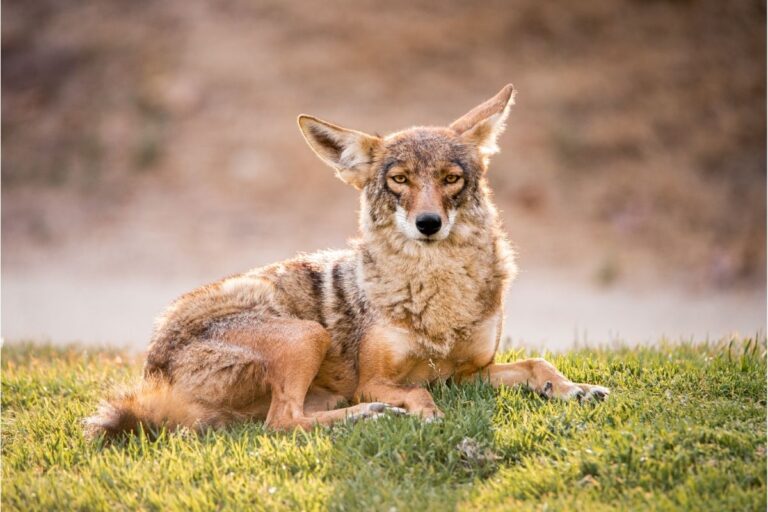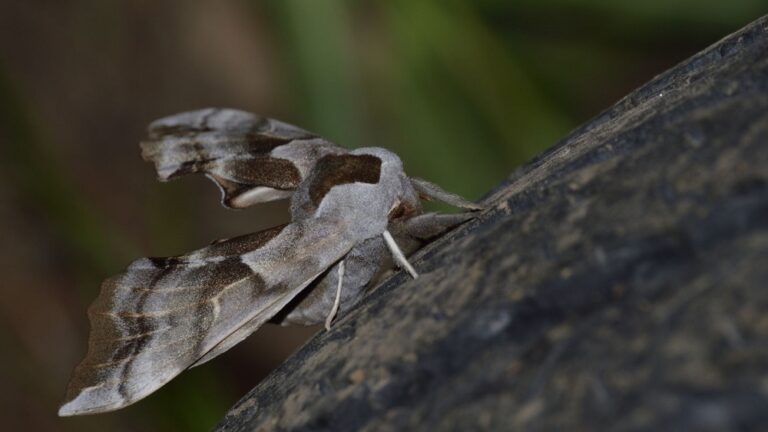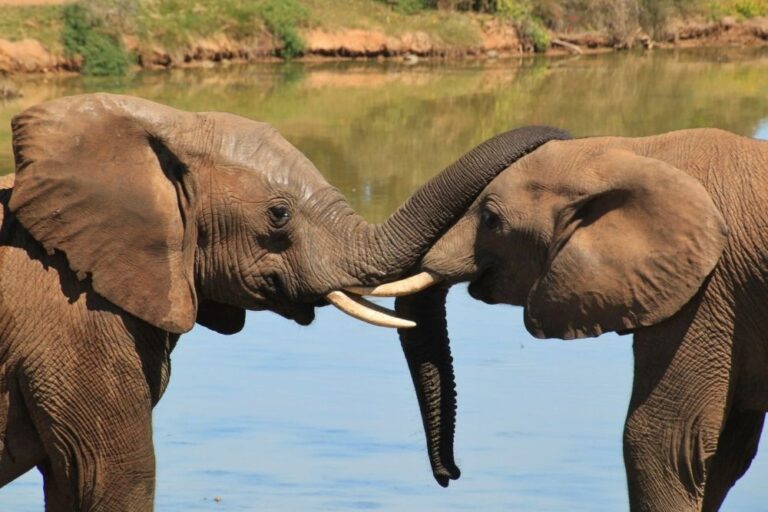Interesting Animal Facts About Polar Bears
Last Updated on February 17, 2022 by
One of the most amazing animals that have ever existed on earth is the polar bear.
Polar bears have been regarded as sacred by many cultures for centuries. They have been the subject of many books, TV shows, and movies. Coca-Cola has even used them as a mascot in commercials.
Having always been fascinated with polar bears, I did some research to find out more. Here are some interesting facts about polar bears that I compiled. Some of them may seem familiar to you, while other facts may surprise you.
Here are 21 interesting facts about polar bears!
Polar Bears Are Marine Mammals
Along with seals, manatees, sea otters, and whales, they are classified as marine mammals.
Animals in this group are dependent on the marine ecosystem to survive. Polar bears are the only animals from this group with large, powerful limbs that enable them to travel a great distance on land.
Polar Bears Are Not Actually White
Although they appear white, they aren’t actually white. The skin of a polar bear is black and its fur is transparent. Polar bears appear white because their fur retracts and reflects sunlight.
They Live In The Arctic
Polar bears reside in the Arctic Circle. Polar bears have 19 different subspecies that live in territories across the United States, Norway, Canada, Denmark, and Russia.
There Is A Grizzly Polar Bear Hybrid
Do you know that there is a cross between a grizzly bear and a polar bear?
20,000 years ago, polar bears evolved from brown bears and split into their own species.
The genetic makeup of brown bears contains about 2% of that of polar bears, which indicates recent breeding.
Captive breeding had also occurred between these species. Grizzlars, grolar bears, and nanulaks are the names of this new hybrid type.
Polar Bears Are Classified As A Vulnerable Species
Polar bears are listed as endangered by IUCN due to climate change and habitat loss. This makes them vulnerable species.
They Are The Largest Bear Species
Polar bears are the largest extant species of bears on this planet. Also, they are the largest extant predatory carnivore.
The largest polar bear ever recorded weighed 1,002kg and was found in northwestern Alaska in 1960.
Most Of Their Life Is Spent On Sea Ice
Although polar bears are born on land, they spend the majority of their life on sea ice, where they prey on other animals.
Polar Bears Are Fantastic Swimmers
Polar bears are great swimmers and can swim for a long time if they are struggling to find food. Also, their bodies are designed to easily glide through the water.
There is in fact a record in which a polar bear swam non-stop for almost 10 days, covering more than 435 miles.
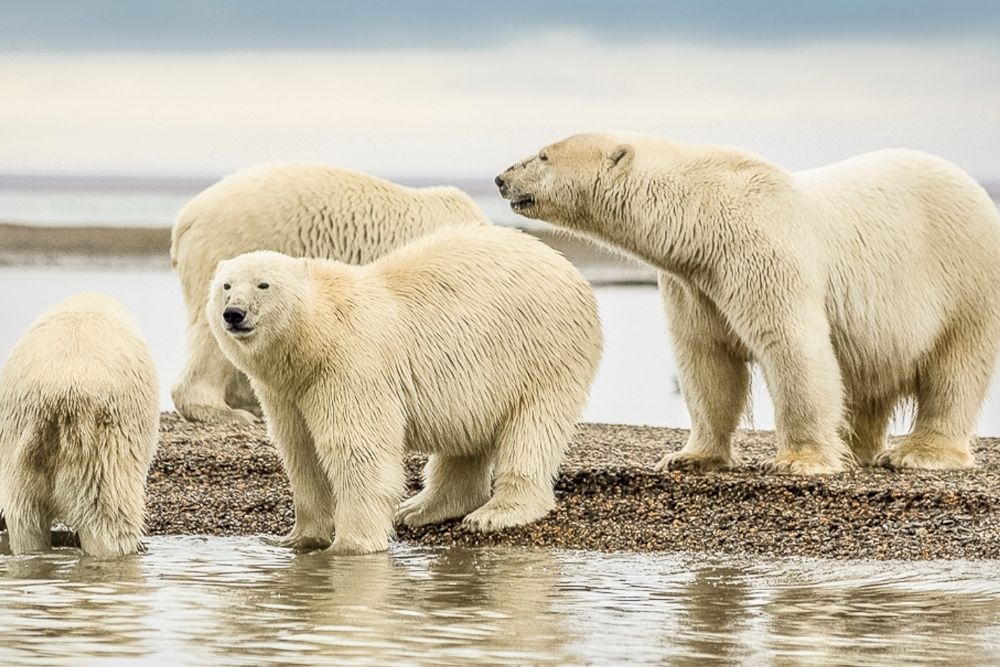
They Have A Walking Hibernation
Unlike other species of bears, polar bears do not hibernate. They endure a state called walking hibernation. In this period, where there isn’t food available, polar bears can spend more than 4 months without eating.
Polar Bears Are Not Territorial
Unlike other carnivores, polar bears are not territorial. They will choose to escape and will often avoid confrontations. Also, unless they are provoked, polar bears will rarely attack humans.
A study in 2017 by the Wildlife Society Bulletin confirmed that there were only 73 confirmed polar bear attacks between 1870 and 2014, including 20 fatalities.
The research also found that nutritionally stressed male bears were most likely to attack humans and that the majority of attacks were predatory which means the bear was killing for food. Polar bear attacks did increase over the study period, but this can be down to changes in the environment.
Polar Bears Possess An Incredible Sense Of Smell
The secret weapon of a polar bear is its nose. They can smell their prey from a mile away due to their fantastic sense of smell.
They Are Fast Animals
Despite the size of a polar bear, they are actually fast animals. In fact, they can reach up to 40 km per hour on land.
Polar Bears Wash In The Snow
Rolling in the snow helps polar bears to clean themselves and it also helps them to cool off.
They Use A Hunting Technique Called Still-hunting
Polar bears use a unique style of hunting called still-hunting. They will wait for several hours near breathing holes, and when seals come out to breathe, they will attack them and drag them out on the surface.
Polar Bears Have a Low Hunting Success Rate
Although polar bears hunt and search for food for most of their lives, they have a surprisingly low success rate of hunting, no more than 2%.
Seals Are A Polar Bear’s Primary Diet
Polar bears live to prey on ringed and bearded seals. This is their primary diet, and the biggest source of fat, which they need in order to survive in the harsh conditions in the arctic.
However, polar bears will also scavenge carcasses or settle for small mammals, birds, eggs and vegetation.
These are only alternatives however when seals aren’t plentiful. Seals are crucial to sustaining a polar bear population. Also, polar bears are top of the food chain and have no natural predators other than humans.
Polar Bears Have A Life Expectancy Of 25 Years
The lifespan of a polar bear is not very long. They usually live for around 25 years in the wild. The oldest polar bear ever recorded in the wild died at the age of 32. The oldest polar bear to die in captivity was aged 43.
The main causes of death for polar bears in the wild is either old age or starvation.
The Majority Of Polar Bears Live In Canada
As previously stated, polar bears can be spotted in the United States, Norway, Canada, Denmark, and Russia.
Despite this, two-thirds of the population of polar bears live on territories in Canada.
It is possible to extract polar bear DNA from just their footprints.
An innovative new technique that has been developed by the WWF and DNA specialist firm SPYGEN allows scientists to successfully isolate DNA from a polar bear’s footprint in the snow.
Only two tiny scoops of snow required from a polar bear track reveal not just the DNA of the polar bear, but even from a seal it had recently eaten.
They Face More Threats Than Climate Change
Although climate change still remains the greatest threat to the polar bear’s survival, that is not all that they are up against.
As the oil and gas industries begin turning their eyes to the arctic, this brings the potential risk of habitat destruction from oil exploration work.
Contact with oil spills can dramatically reduce the insulating effect of a bear’s fur which means they use up more energy to get warm. The oil can also poison the polar bears if it is ingested.
Additionally, polar bears can also be exposed to toxic chemicals such as pesticides through their prey. This can affect a bear’s biological functioning and ability to reproduce.
The melting of sea ice from climate change has now increased human-polar bear conflicts when hungry polar bears go searching for food in the summer.
Thankfully, people are now learning to adapt to the polar bear’s presence and take preventative measures to reduce the risk of conflict.
There Are 19 Subpopulations Of Polar Bear
There are approximately 26,000 wild polar bears on this planet and they are divided into 19 units or subpopulations.
Of these 19, just 1 subpopulation is increasing, 5 are stable and 4 are in decline. The remaining 9 do not have sufficient data to be assessed so there is no information to tell how they are doing.
Final Thoughts
So, if you weren’t clued up on polar bears before, then you should be an expert by now!
Whatever you were aiming to find out about polar bears, then you hopefully should find it on this list of amazing polar bear facts!

